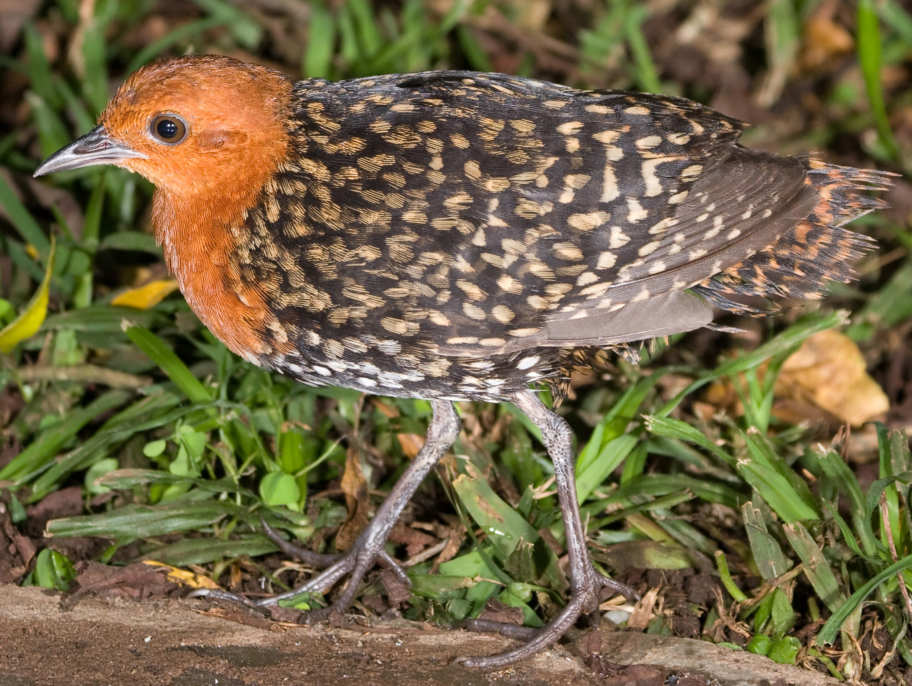
Sarothrura elegans
SUBFAMILY
Rallinae
TAXONOMY
Gallinula elegans A. Smith, 1839, Durban, South Africa. Two
subspecies.
OTHER COMMON NAMES
French: Rвle ponctuй; German: Tropfenralle; Spanish: Polluela
Elegante.
PHYSICAL CHARACTERISTICS
6–6.7 in (15–17 cm); 1.4–2 oz (39–61 g). Male has orangechestnut
foreparts and buff-spotted upperparts; female golden
brown with buff-spotted upperparts and barred underparts. Juvenile
gray-brown.
DISTRIBUTION
S. e. reichenovi: Guinea east to Democratic Republic of Congo
(Zaire) and Uganda, south to north Angola; S. e. elegans: southern
Sudan and Ethiopia south to South Africa.
HABITAT
Forest, thickets, and abandoned cultivated areas.
BEHAVIOR
Territorial when breeding. Diurnal, but breeding males sing
mostly at night, giving a loud, repeated, hollow hoot “oooooo,”
sometimes for 12 hours or more. Some populations sedentary,
others have seasonal movements.
FEEDING ECOLOGY AND DIET
Takes terrestrial invertebrates.
REPRODUCTIVE BIOLOGY
Monogamous. Breeds during rains. Lays three to five white
eggs in domed nest of dead leaves or grass on ground. Incubation
15–16 days; young independent at 19–21 days.
CONSERVATION STATUS
Not threatened. Widespread, locally common. Probably holds
its own because it colonizes degraded forest habitats and exotic
vegetation.
SIGNIFICANCE TO HUMANS
Its hooting vocalization has given rise to many local legends.
Other popular Animals
Photo Gallery of - Buff-spotted flufftail




 Animalia Life
Animalia Life